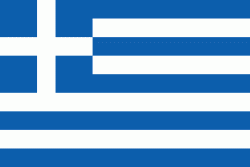Chania Prefecture (Nomós Chaniás)
Chania regional unit, often informally termed 'Western Crete', is a part of the island which includes the districts of Apokoronas, Sfakia, and Selino in the far South West corner. Other towns in the Chania prefecture include Hora Sfakion, Kissamos, Palaiochora, Maleme, Vryses, Vamos, Georgioupolis and Kalives.
The natural park of Samariá Gorge, a tourist attraction and a refuge for the rare Cretan wild goat or kri-kri, is in the South of the regional unit. The White Mountains or Lefka Ori, through which the Samaria, Aradena, Imbros and other gorges run, are the limestone peaks topped by snow until May that occupy much of Chania regional unit. They contain more than 40 peaks over 2,000 meters high. The highest peak in this area is Pachnes, at 2,453 meters above sea level.
The regional unit also includes three headlands, known as the "three heads" of Crete. From east to west, they are: Akrotiri, Rodopos (also called Spatha) and Gramvousa.
Western Crete is popular with tourists for its spring flowers that linger on into early May in the mountains. Birdwatching is also common, with the lammergeier and golden eagle especially sought for. As an island, Crete has many endemic species of plant and animal.
Crete's only freshwater lake, Lake Kournas, is in the regional unit close to the border with Rethymno regional unit, 47 km from Chania. It is relatively large, with a perimeter of 3.5 km. The lake used to be called 'Korisia' after ancient 'Korion', a city thought to be in the area with a temple to Athena. The lake used to be reportedly full of eels but now is better known for its terrapins and tourists. Tavernas and pedalo rental shops line part of the shore.
Chania is the regional unit of Crete that receives the most precipitation. The Exkursionsflora von Kreta by Jahn & Schoenfelder has a precipitation map and text confirming that in general, western Crete (Chania prefecture) has more precipitation than any other region on an average basis.
Map - Chania Prefecture (Nomós Chaniás)
Map
Country - Greece
 |
 |
| Flag of Greece | |
Greece is considered the cradle of Western civilization, being the birthplace of democracy, Western philosophy, Western literature, historiography, political science, major scientific and mathematical principles, theatre and the Olympic Games. From the eighth century BC, the Greeks were organised into various independent city-states, known as poleis (singular polis), which spanned the Mediterranean and the Black Sea. Philip II of Macedon united most of present-day Greece in the fourth century BC, with his son Alexander the Great rapidly conquering much of the ancient world, from the eastern Mediterranean to the North Western parts of India. The subsequent Hellenistic period saw the height of Greek culture and influence in antiquity. Greece was annexed by Rome in the second century BC, becoming an integral part of the Roman Empire and its continuation, the Byzantine Empire, which was culturally and linguistically predominantly Greek.
Currency / Language
| ISO | Currency | Symbol | Significant figures |
|---|---|---|---|
| EUR | Euro | € | 2 |
| ISO | Language |
|---|---|
| EN | English language |
| FR | French language |
| EL | Greek language |















